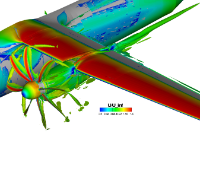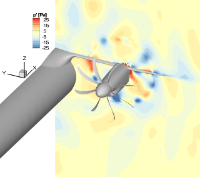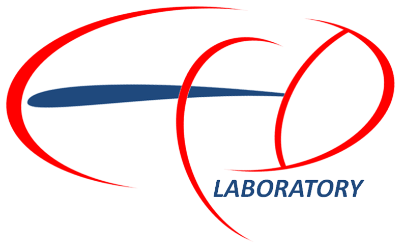Computational Aeroacoustic Analysis of Propellers
Aviation's aim is a safer, cleaner and quieter aircraft. For short and medium range flights, turboprops are the most convinient choice because of their high propulsive efficiency combined with high speed. However, improvements are needed to comply with the future acoustic emissions certification requirements.
Computational Fluid Dynamics (CFD), coupled with different acoustic methods, is used to analyse tonal and broadband noise spectra of different propeller innovative designs. Installed configurations (model-scale and full-scale) are also studied to investigate the airframe interaction's effects.
 |
 |
This research started inside the framework of IMPACTA (IMproving the Propulsion Aerodynamics and aCoustics of Turboprop Aircraft), a project promoted by Dowty Propellers in collaboration with ARA (Aircraft Research Association) and the University of Glasgow.
Contacts
George Barakos - Professor, George.Barakos@glasgow.ac.uk
Giulia Chirico - PhD Student, g.chirico.1@research.gla.ac.uk
Publications
- Barakos, G. N., and Johnson, C. S. "Acoustic comparison of propellers", International Journal of Aeroacoustics (Accepted for Publication February 11, 2016)
- Chirico, G. and Barakos, G. N. "Computational Aeroacustic Analysis of Propeller Configurations", RAeS Applied Aerodynamics Research Conference (July 19-21, 2016).


